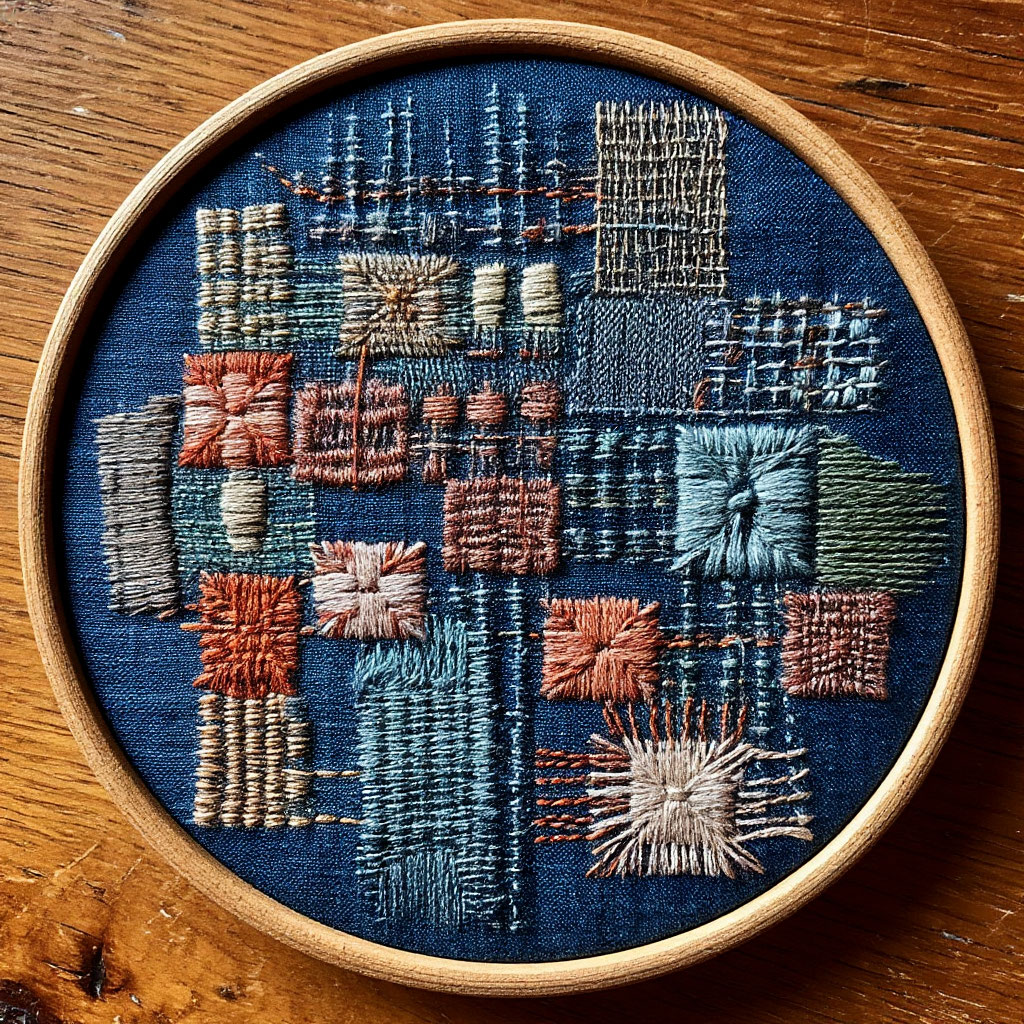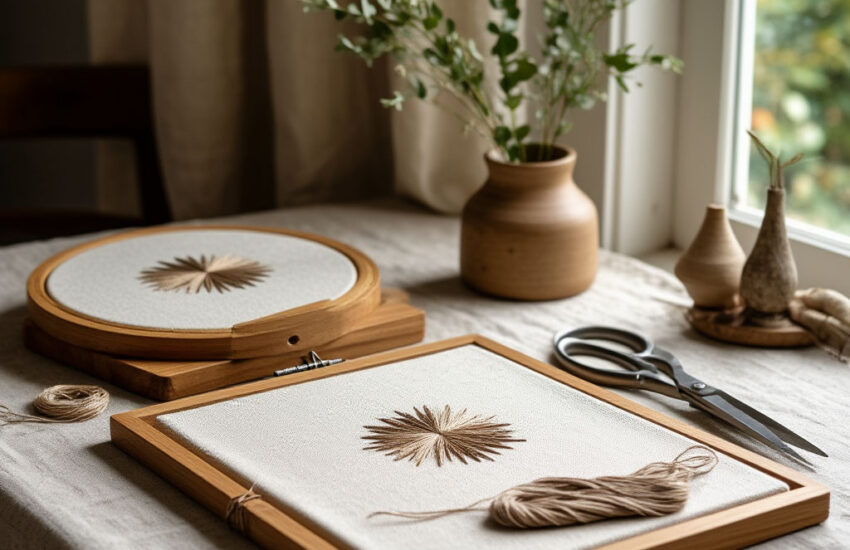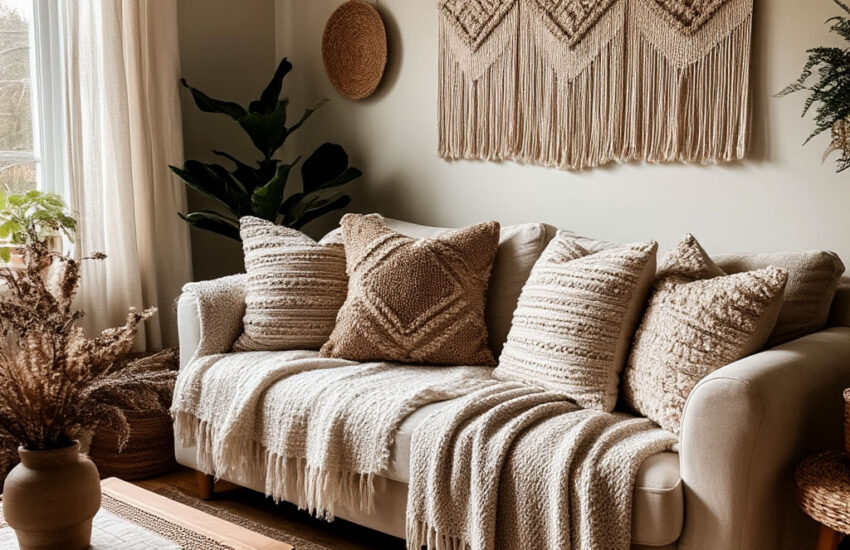Boro Embroidery: The Ancient Japanese Art of Sustainable Stitching
Contents
- 1 What Is Boro Embroidery? Reviving the Art of Sustainable Mending
- 2 Boro Embroidery: The Timeless Japanese Art of Sustainable Stitching
- 3 Step-by-Step Guide to DIY Boro Embroidery: Master the Art of Sustainable Stitching
- 3.1 Introduction to Boro Embroidery Basics
- 3.2 Materials You’ll Need
- 3.3 Step 1: Prepare Your Fabric
- 3.4 Step 2: Arrange & Secure Patches
- 3.5 Step 3: Start Stitching (Basic Sashiko Technique)
- 3.6 Step 4: Experiment with Stitch Patterns
- 3.7 Step 5: Finishing Touches
- 3.8 Creative Project Ideas
- 3.9 Troubleshooting Common Issues
- 3.10 Why Boro Embroidery Matters Today
- 4 FAQ
- 4.0.1 Is boro embroidery cultural appropriation if I’m not Japanese?
- 4.0.2 Can I machine-wash jeans with boro embroidery without ruining the stitches?
- 4.0.3 Will boro embroidery actually hold up on work denim, or will it fall apart?
- 4.0.4 Can I do boro-style visible mending with a sewing machine, or does it have to be hand-stitched?
- 4.0.5 How much do basic boro embroidery supplies cost in the U.S., and what should I buy first?
In today’s fast-fashion world where clothing has become disposable, Boro embroidery stands as a powerful testament to sustainability and mindful craftsmanship. This ancient Japanese sashiko stitching technique transforms worn-out fabrics into breathtaking upcycled fabric art, blending functionality with artistic expression. More than just a repair method, Boro represents a philosophy of resourcefulness – one that modern designers and eco-conscious consumers are embracing as part of the global sustainable textile techniques movement.
The beauty of Boro embroidery lies in its imperfections. Unlike mass-produced garments, each Boro piece tells a unique story through its visible mends and layered patches. Originally developed by Japanese peasants who couldn’t afford new fabrics, this sustainable textile technique has evolved into a celebrated art form. Contemporary applications range from high-fashion runway pieces to DIY projects showing how to repair clothes with Boro in stylish, personal ways.
What makes Japanese sashiko stitching particularly relevant today is its alignment with circular fashion principles. In an era where the average American throws away 81 pounds of clothing annually, Boro offers an alternative approach that honors materials and reduces waste. The technique’s signature running stitches not only reinforce weak fabric areas but create mesmerizing geometric patterns that elevate simple repairs to upcycled fabric art.
This comprehensive guide explores every aspect of Boro’s journey – from its humble origins to modern applications. We’ll examine:
- The cultural significance behind authentic Boro embroidery
- Step-by-step instructions for creating your own upcycled fabric art
- How contemporary designers are reinventing sustainable textile techniques
- Practical tips for applying Japanese sashiko stitching to everyday mending
Whether you’re a fashion student, sustainability advocate, or craft enthusiast, mastering how to repair clothes with Boro connects you to a centuries-old tradition while addressing modern environmental concerns. Let’s unravel the threads of this fascinating craft together. By the end of this article, you’ll be able to download a checklist — a simple guide to practicing Boro embroidery in a sustainable and creative way.
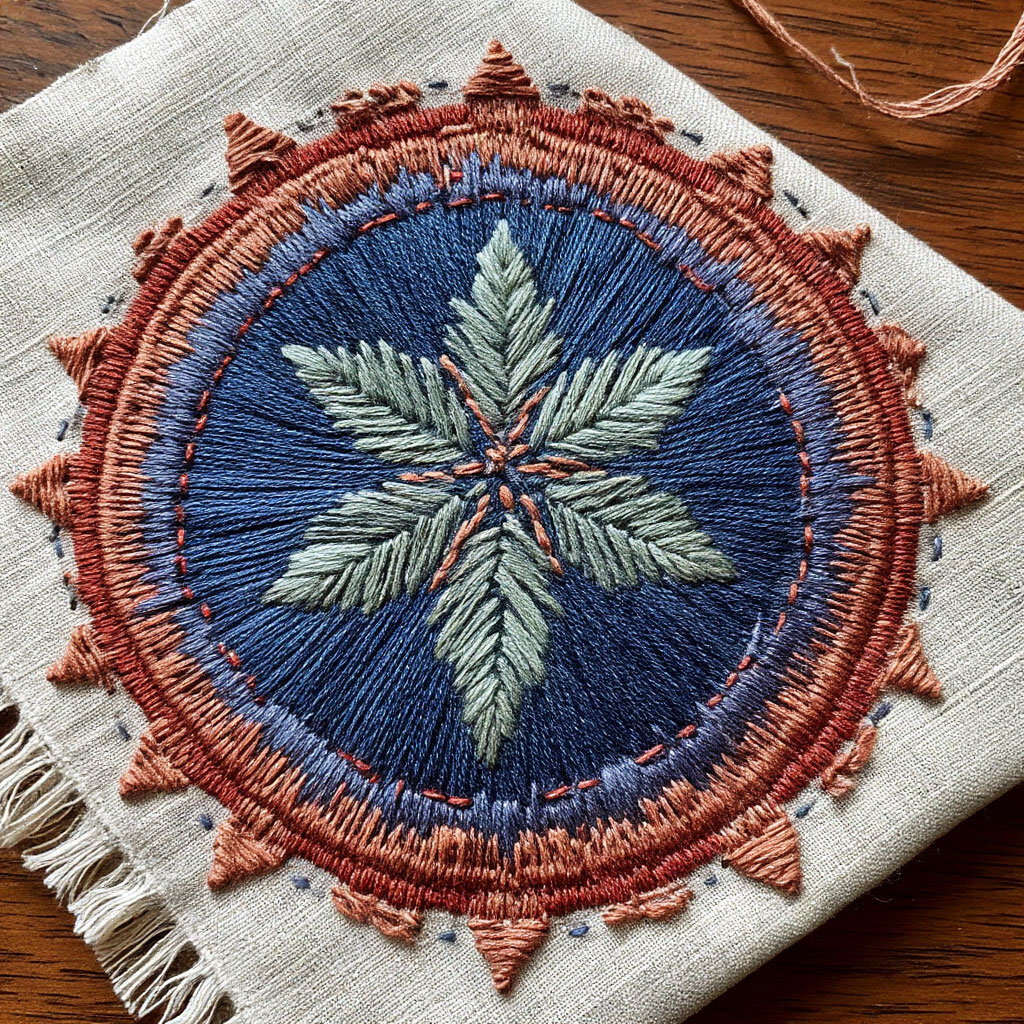
What Is Boro Embroidery? Reviving the Art of Sustainable Mending
Boro embroidery represents one of the most authentic forms of sustainable fashion – born from necessity rather than trend. This Japanese sashiko stitching technique developed over generations as rural communities repaired and reinforced work garments using whatever fabric scraps were available. Today, as the world seeks alternatives to fast fashion, these sustainable textile techniques are experiencing a remarkable revival.
At its core, Boro embroidery is about transformation. A torn knee becomes a canvas for indigo patches. Worn shirt cuffs gain new life through intricate stitching. What was once considered poverty repair is now celebrated as upcycled fabric art in galleries and fashion collections worldwide. The process teaches us how to repair clothes with Boro in ways that honor the original garment while adding character and history.
The Technical Foundations of Boro
Authentic Japanese sashiko stitching follows several distinctive principles:
- Layered Construction: Multiple fabric pieces are stacked and stitched together, creating thickness where reinforcement is needed most.
- Functional Aesthetics: While decorative, every stitch serves a structural purpose. The signature running stitch (about 1/4 inch long) maximizes strength with minimal thread.
- Material Philosophy: Traditional Boro exclusively used natural fibers like hemp and cotton, with indigo-dyed fabrics being particularly prized.
- Visible Mending: Unlike invisible repairs, Boro celebrates the mending process with contrasting threads and uneven patch shapes.
Modern interpretations of Boro embroidery maintain these core elements while incorporating contemporary materials. Denim jeans, for instance, have become a popular base for upcycled fabric art because their durability and fading patterns complement the Boro aesthetic perfectly.
Cultural Significance Beyond Stitches
What elevates sustainable textile techniques like Boro beyond mere craft is their deep cultural meaning. In Japanese villages, clothing represented a significant investment – often requiring months of labor to grow, spin, weave and dye the fabrics. This made garment preservation essential, with mothers teaching daughters how to repair clothes with Boro as a crucial life skill.
The layered repairs also served as family records. A work jacket might contain:
- Patches from a grandfather’s happi coat
- Stitches added during particularly harsh winters
- Fabric scraps from significant life events
Contemporary practitioners of Japanese sashiko stitching often incorporate this storytelling aspect by using meaningful fabrics – perhaps a child’s outgrown onesie or a wedding dress fragment – to create heirloom-quality upcycled fabric art.
Boro’s Modern Sustainability Impact
In ecological terms, Boro embroidery offers multiple benefits:
- Waste Reduction: Extends garment lifespan by 5-10 years
- Resource Conservation: Requires no new materials
- Low Carbon Footprint: Hand stitching needs only needle and thread
- Toxic Chemical Avoidance: Natural fibers and dyes are biodegradable
Fashion schools now teach how to repair clothes with Boro as part of sustainable design curricula. Brands like Patagonia and Eileen Fisher have adapted these sustainable textile techniques for commercial repair programs. Even fast fashion companies are exploring Boro-inspired solutions to address criticism about disposable clothing.
The true power of Boro embroidery lies in its accessibility. Unlike many artisan crafts requiring special tools or training, Boro needs only basic sewing skills. This democratization makes it ideal for today’s maker movement, where anyone can transform an old shirt into upcycled fabric art with minimal investment.
As we’ll explore in subsequent sections, this versatility explains why Japanese sashiko stitching has transitioned so successfully from 18th century rice fields to 21st century design studios. The stitches remain the same, but their cultural significance continues evolving.
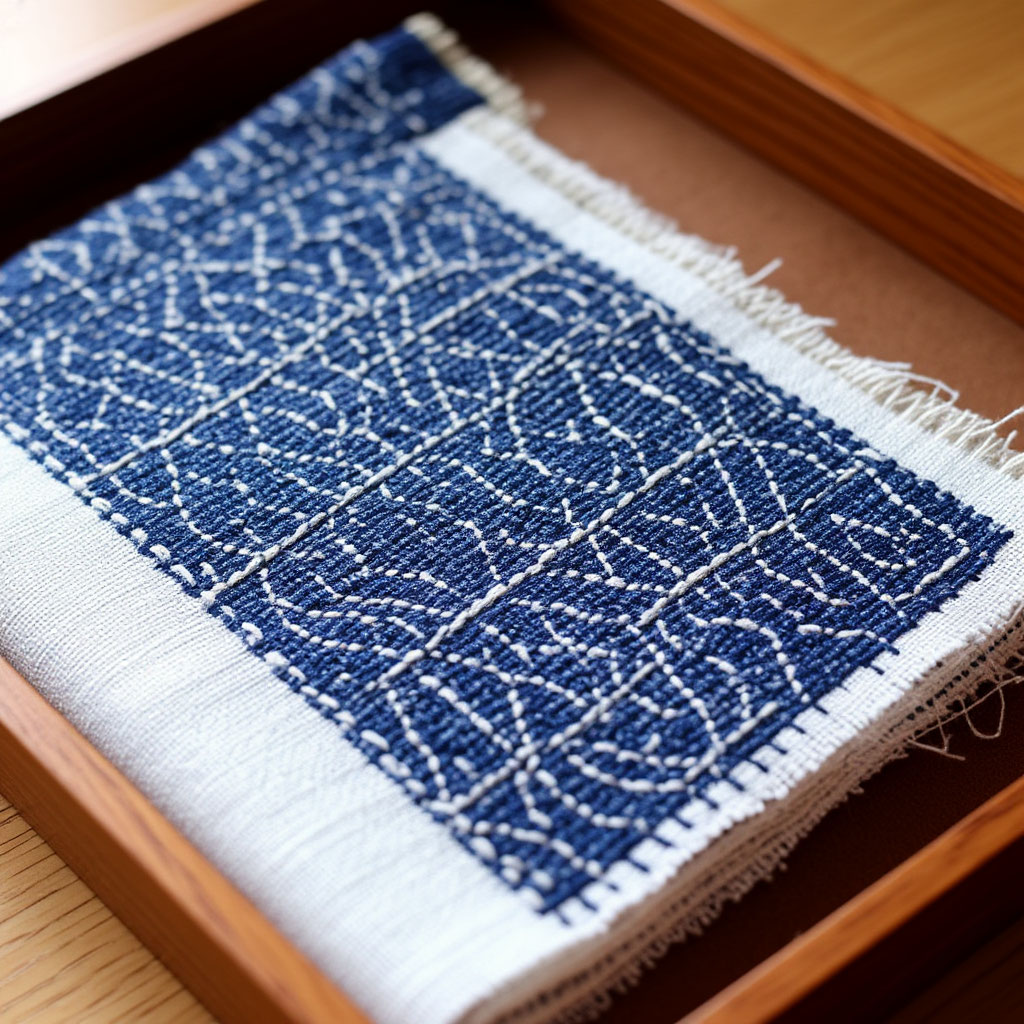
Boro Embroidery: The Timeless Japanese Art of Sustainable Stitching
In today’s fast-fashion world where clothing has become disposable, Boro embroidery stands as a powerful testament to sustainability and mindful craftsmanship. This ancient Japanese sashiko stitching technique transforms worn-out fabrics into breathtaking upcycled fabric art, blending functionality with artistic expression. More than just a repair method, Boro represents a philosophy of resourcefulness – one that modern designers and eco-conscious consumers are embracing as part of the global sustainable textile techniques movement.
The beauty of Boro embroidery lies in its imperfections. Unlike mass-produced garments, each Boro piece tells a unique story through its visible mends and layered patches. Originally developed by Japanese peasants who couldn’t afford new fabrics, this sustainable textile technique has evolved into a celebrated art form. Contemporary applications range from high-fashion runway pieces to DIY projects showing how to repair clothes with Boro in stylish, personal ways.
The Rising Popularity of Boro in Modern Craftsmanship
What makes Japanese sashiko stitching particularly relevant today is its perfect alignment with circular fashion principles. In an era where the average American throws away 81 pounds of clothing annually, Boro offers an alternative approach that honors materials and reduces waste. The technique’s signature running stitches not only reinforce weak fabric areas but create mesmerizing geometric patterns that elevate simple repairs to upcycled fabric art.
The recent resurgence of interest in Boro embroidery can be attributed to several cultural shifts:
- Growing awareness of fast fashion’s environmental impact
- Increased appreciation for handmade, artisanal crafts
- Desire for unique, personalized clothing items
- Movement toward mindful consumption and sustainability
Understanding the Boro Aesthetic
Unlike perfect, machine-made textiles, authentic Boro embroidery celebrates:
- Asymmetry: Irregular patch shapes and uneven stitching
- Texture: Layered fabrics creating dimensional surfaces
- Patina: Worn, faded fabrics showing their history
- Imperfection: Visible repairs that tell a story
This distinctive look has inspired contemporary designers to incorporate Japanese sashiko stitching into modern collections while maintaining respect for traditional sustainable textile techniques. The result is a beautiful marriage of old and new – where centuries-old mending methods meet current fashion sensibilities.
Practical Applications for Today’s World
Learning how to repair clothes with Boro offers numerous practical benefits:
- Economic Value: Extend the life of favorite garments
- Environmental Impact: Reduce textile waste
- Creative Expression: Personalize clothing with unique designs
- Therapeutic Benefits: The meditative quality of hand stitching
Many modern crafters are adapting traditional Boro embroidery methods to suit contemporary needs:
- Using colorful modern fabrics alongside traditional indigo
- Incorporating machine stitching for certain elements
- Applying Boro principles to non-clothing items like home decor
The Global Reach of Boro Techniques
What began as a regional Japanese practice has become a worldwide phenomenon. Today, you’ll find:
- International exhibitions of antique Boro textiles
- Contemporary artists creating upcycled fabric art with Boro influences
- Fashion schools teaching sustainable textile techniques
- Online communities sharing how to repair clothes with Boro
This global exchange has led to fascinating hybrid styles, where Japanese sashiko stitching merges with:
- American patchwork quilting traditions
- European visible mending movements
- African textile traditions
- Indigenous weaving techniques
Why Boro Matters Now More Than Ever
In our current climate crisis, Boro embroidery offers more than just aesthetic appeal – it presents a viable alternative to disposable fashion. By mastering these sustainable textile techniques, modern makers can:
- Dramatically reduce their fashion footprint
- Preserve traditional crafts at risk of being lost
- Create heirloom-quality pieces meant to last generations
- Develop a deeper connection to their possessions
This comprehensive guide explores every aspect of Boro’s journey – from its humble origins to modern applications. We’ll examine:
- The cultural significance behind authentic Boro embroidery
- Step-by-step instructions for creating your own upcycled fabric art
- How contemporary designers are reinventing sustainable textile techniques
- Practical tips for applying Japanese sashiko stitching to everyday mending
Whether you’re a fashion student, sustainability advocate, or craft enthusiast, mastering how to repair clothes with Boro connects you to a centuries-old tradition while addressing modern environmental concerns. Let’s unravel the threads of this fascinating craft together.
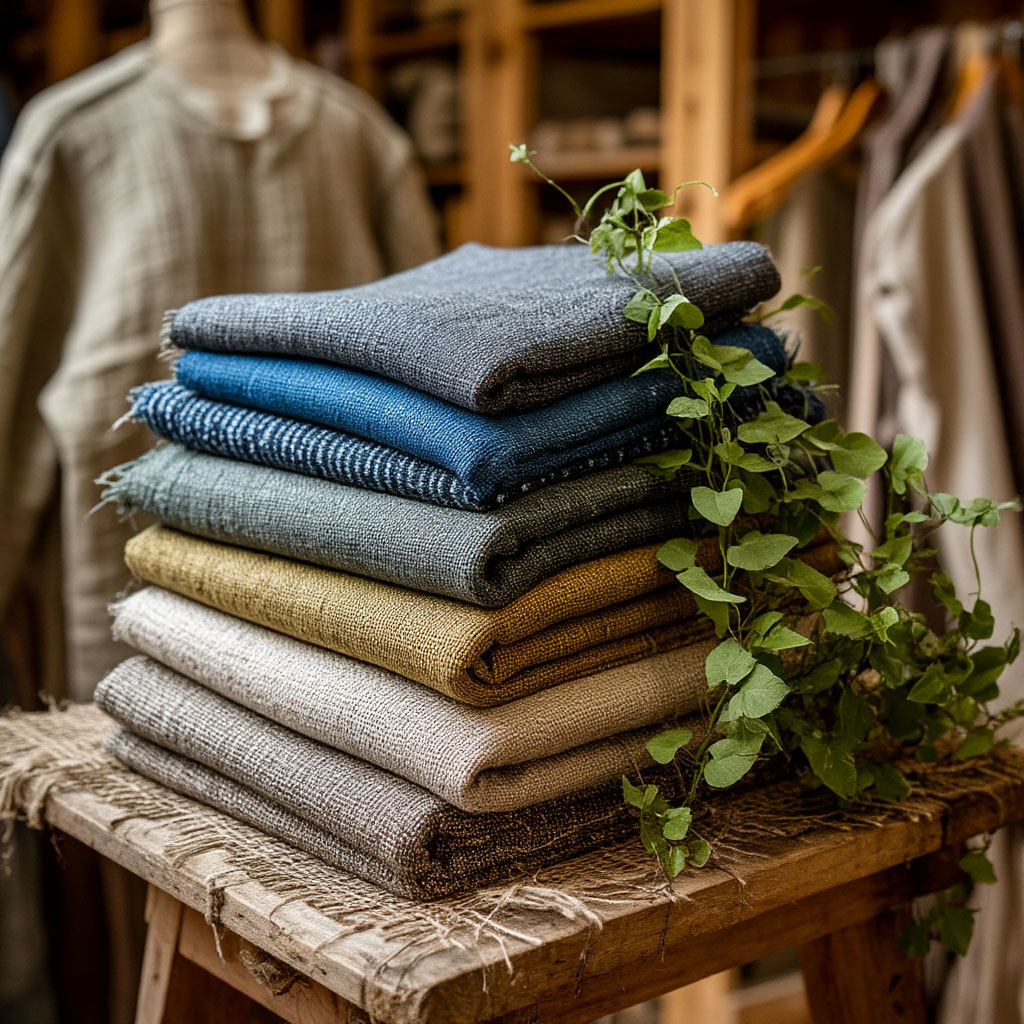
Step-by-Step Guide to DIY Boro Embroidery: Master the Art of Sustainable Stitching
Introduction to Boro Embroidery Basics
Boro embroidery is more than just mending—it’s a meditative craft that transforms worn fabrics into upcycled fabric art. Rooted in Japanese sashiko stitching, this sustainable textile technique turns rips, tears, and thin spots into beautiful, textured designs. Whether you’re learning how to repair clothes with Boro or creating decorative pieces, this guide covers everything from materials to advanced stitching patterns.
Materials You’ll Need
Before starting, gather these essentials:
Fabric & Thread
- Base fabric: Denim, linen, or cotton (old jeans, shirts, or tote bags work well)
- Patches: Scraps of fabric (preferably natural fibers like cotton, linen, or hemp)
- Thread: Heavy cotton or sashiko thread (traditional white or indigo, but colors can vary)
Tools
- Fabric scissors – for clean cuts
- Pins or clips – to hold patches in place
- Chalk or washable fabric marker – for sketching designs
- Needle – a thick, sharp needle (sashiko needles are ideal)
- Ruler or measuring tape (optional for geometric patterns)
Optional Extras
- Thimble – to protect fingers when pushing through thick layers
- Embroidery hoop – helps keep fabric taut (useful for beginners)
- Fray check or fabric glue – prevents edges from unraveling
Step 1: Prepare Your Fabric
- Wash & Dry – Clean your base fabric to remove dirt or oils.
- Identify Repair Areas – Look for holes, thin spots, or areas you want to reinforce.
- Sketch Your Design (Optional) – Lightly mark where patches or stitches will go.
Pro Tip: If patching a hole, cut the patch slightly larger than the damaged area.
Step 2: Arrange & Secure Patches
- Place Patches – Layer scraps over weak spots or create intentional designs.
- Pin or Clip – Secure patches before stitching to prevent shifting.
- Fold Edges (Optional) – For a cleaner look, fold patch edges under before stitching.
Design Idea: Mix textures—try denim with floral cotton for contrast.
Step 3: Start Stitching (Basic Sashiko Technique)
Traditional Running Stitch (most common in Boro embroidery):
- Thread the Needle – Use a single long strand (double for extra strength).
- Knot the End – Tie a small knot at the thread’s end.
- Begin Stitching –
- Push the needle up through both fabric layers.
- Make a small stitch (¼ inch) and pull through.
- Repeat in a straight line or geometric pattern.
- Even Spacing – Keep stitches consistent in length and distance (about ¼” apart).
Advanced Touch: Try varied stitch lengths for a more organic look.
Step 4: Experiment with Stitch Patterns
Beyond basic running stitches, try these Japanese sashiko stitching styles:
1. Hitomezashi (Single-Stitch Sashiko)
- Creates a dotted grid pattern
- Perfect for geometric designs
2. Moyouzashi (Patterned Stitching)
- Forms waves, diamonds, or interlocking shapes
- Great for decorative upcycled fabric art
3. Kogin (Decorative Reinforcement)
- Thicker, more pronounced stitches
- Often used in traditional workwear
Pro Tip: Use contrasting thread (white on indigo) for bold designs.
Step 5: Finishing Touches
- Trim Excess Threads – Clip any loose ends.
- Press with Iron (Optional) – Flatten stitches for a polished finish.
- Wash & Soften – Hand wash to preserve stitches; air dry.
Eco Bonus: The more you wash Boro-repaired items, the more vintage they look!
Creative Project Ideas
Now that you know how to repair clothes with Boro, try these:
- Denim Jacket Revival – Patch elbows with vintage kimono scraps
- Tote Bag Upgrade – Stitch a sampler of different sashiko patterns
- Quilted Wall Hanging – Combine Boro with modern quilting
Troubleshooting Common Issues
- Problem: Fabric puckering
Fix: Loosen tension or use an embroidery hoop - Problem: Thread breaking
Fix: Use a thicker needle or wax the thread - Problem: Patches shifting
Fix: Baste (tack) patches before final stitching
Why Boro Embroidery Matters Today
By mastering this sustainable textile technique, you:
- Reduce textile waste – Give old fabrics new life
- Create unique designs – No two Boro pieces are alike
- Practice mindfulness – Hand stitching is calming and meditative
Before the conclusion, watch this concise explainer on boro embroidery—what it is, how it relates to sashiko, and why this sustainable “visible mending” is trending again.
FAQ
Is boro embroidery cultural appropriation if I’m not Japanese?
No, if done respectfully. Credit the tradition and avoid claiming it as your invention. Use accurate terms like sashiko and boro. Don’t market it as “authentic” if you’re a learner.
Can I machine-wash jeans with boro embroidery without ruining the stitches?
Yes, but use gentle settings. Turn the item inside out and use cold water. Skip the dryer or use low heat. Heavier thread may fuzz; trim ends as needed.
Will boro embroidery actually hold up on work denim, or will it fall apart?
Yes, if layered well. Use sturdy cotton sashiko thread and tight running stitches. Add a backing patch for stress points. Re-stitch worn spots early.
Can I do boro-style visible mending with a sewing machine, or does it have to be hand-stitched?
Yes, a machine can mimic the look. Use a longer straight stitch and reinforce in multiple passes. Hand stitching gives more control. Mix methods as needed.
How much do basic boro embroidery supplies cost in the U.S., and what should I buy first?
Start with $15–$35: sashiko needles ($6–$12), cotton thread ($5–$10), thimble ($4–$8). Use scrap denim or linen as patches. Add marking tools and shears later.
Boro embroidery is more than just a clothing repair technique. It’s a philosophy that promotes the conservation of natural resources and expresses respect for previous generations. By applying principles of sustainable textile techniques, we can contribute to environmental preservation and create unique garments filled with history and emotions.
If you are interested in restoring and decorating old items, try mastering the basics of Boro embroidery and make your contribution to the development of sustainable design. You can now download a Boro embroidery checklist — a practical tool to help you stitch, repair, and create with purpose while honoring tradition.
